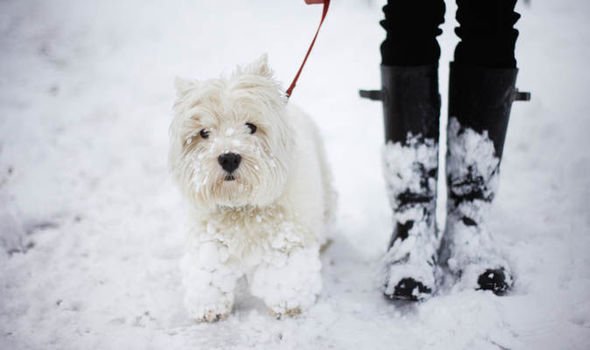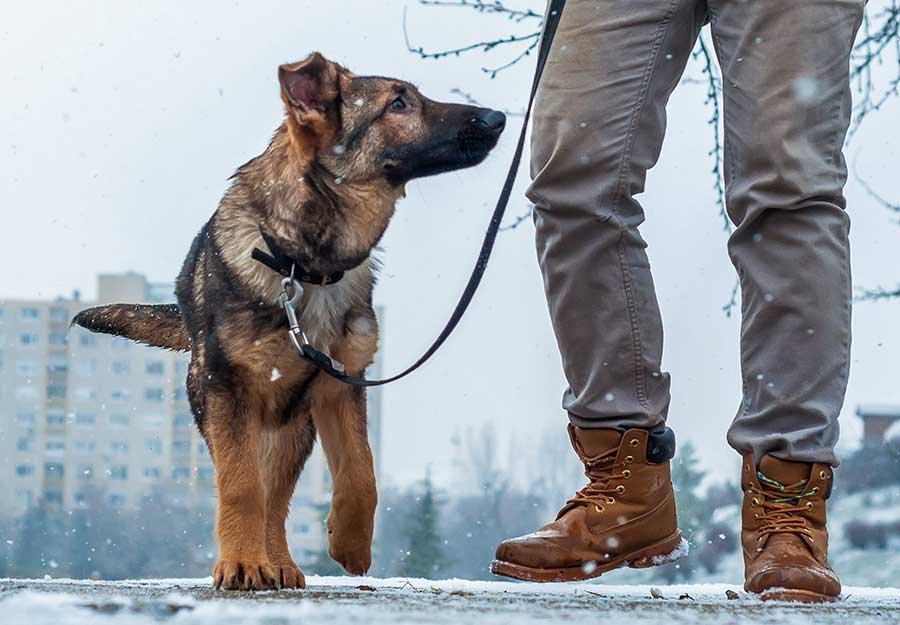How To Prepare Your Dog for Outdoor Walks During Cold Months

Taking your dog for a walk is an essential and enjoyable activity. While other seasons may be mild, winter weather can raise concerns about your dog’s safety. It’s natural to worry about the impact of cold temperatures on your furry friend’s health, but don’t let it deter you from walking your dog unless there is a genuine reason to do so.
Certain breeds like Boston Terriers, Dachshunds, and French Bulldogs have thin and short coats, making them more vulnerable to the cold. However, for dogs with thick fur coats like Huskies, St. Bernards, or Samoyeds, there is natural protection against the cold, and you won’t need to worry as much.
In this article, we’ll share tips and advice on how to keep your dog safe and warm during outdoor walks in the colder months.
How Dog Breeds Differ in Their Sensitivity to Cold
Experts say bigger and chubbier pups are less sensitive to cold than smaller and thin breeds like pugs, Chihuahuas, terriers, coonhounds, greyhounds, and whippets. Plus, their age and existing health condition also matter. Aged ones can be susceptible to frostbite and hypothermia.
Health Factors to Consider
If a dog is a kidney, diabetes, or arthritis patient, it may also need protection from the cold. However, healthy dogs of large and medium sizes can walk outside for 30 minutes at temperatures above 20°F. For tinier dogs or someone with thin coats, walking outdoors in temperatures less than 45°F can be risky.
Right Temperature for Your Dog’s Outdoor Walks
The right temperature for your dog’s outdoor walks depends on various factors, including the breed, size, coat thickness, and overall health. As a general guideline, healthy dogs of large and medium sizes can walk outside for 30 minutes at temperatures above 20°F (-6°C). For smaller dogs or those with thin coats, walking outdoors in temperatures less than 45°F (7°C) can be risky. However, these are just guidelines, and it’s always best to consider your dog’s individual needs and limitations before heading out for a walk.
Signs Your Dog is Uncomfortable in Cold Weather
When freezing outside, you can restrain your pet’s outdoor time to 15 minutes. Ensure you watch their behavior – walking slowly or stiffly, whining, shivering, tucking their tail, licking paws, panting, etc. These are signing your pet is feeling uncomfortable.
Some pet lovers avoid going outside with their dogs to prevent risks. However, they make up for the walks by taking them for a bathroom break, playing enrichment activities with them, or making them exercise.
Still, you may be one of those pet parents who want their dogs to have all the fun without compromise. While that’s a good spirit, you must learn about the possible risks of walking your dog in the snow. One of them can be seeing your dog scarfing down snow. Is it safe for dogs to eat snow? Well, it depends. Let’s find out more about it.
Is it a Cause for Concern When Your Dog Eats Snow?

Dogs usually love playing in the snow; some can eat it too. A few of them may do this instinctively, for instance, huskies whose ancestors lived in the cold temperatures and ate snow to fight dehydration. Still, it doesn’t mean eating snow is safe for them, and there are various reasons. While some eat this substance for the kind of experience it gives, others can have underlying health problems or conditions triggering this behavior in them.
Dehydration
When dogs don’t get fresh drinking water, they may consume snow because they become thirsty too soon and need to replenish themselves. Fresh snow can still be safe to eat, but it contains about 5% water. Nevertheless, if your pup is thirsty, it will seek snow. If accessibility to clean water is an issue, you must arrange it for your pet to help it avoid snow.
Physical disorder
Sometimes, an underlying medical condition can cause snow consumption in dogs. One typical example is polydipsia, which signals risks like kidney failure, thyroid, Cushing’s syndrome, diabetes, and more. However, all cases of snow eating don’t mean an underlying issue.
Still, keep an eye on your dog’s appetite for snow and the amount of water he drinks a day. The frequency and quantity of liquid consumption need closer health investigation. If your pet has increased water consumption, take him to the vet.
He may need to undergo a few medical examinations for such symptoms. Once the results come out, your vet can recommend the necessary steps based on your pet’s condition.
Other reasons why your dog cannot eat snow
Loading up on snow can bring their body temperatures to dangerously low levels, making them sick or even die. What colored snow your furry friend eats can also have health implications. For instance, eating green, brown, blue, or orange-colored snow can be harmful to your canine friend’s health because those spots mean leakage from cars, which can be engine coolant or motor oil.
All these are toxic materials, regardless of how much your dog ingested the affected snow. It can be life-threatening for your pet. Yellow snow may be acceptable as it signals one of his friends was there. Still, it’s better to avoid any foreign material.
Things to ensure from your end while preparing your dog for a walk in cold months.
- During freezing temperatures, you will want to keep walks shorter. Please choose when it is warmer than early mornings or evenings. When it’s frigid, you can instead engage your pet in indoor activities before taking it outside. Thin dogs may need a sweater or a warm covering for protection.
- Also, it will be great to make them wear booties to keep their paws safe from deicers, salt, and ice. Trim the paw pads’ hair, so salt and ice don’t accumulate there. Once you two return home, clean your furry pet’s paws of salt and chemicals. Put some paw balm to soothe its pads. Keep your pet on a leash when outside for visibility. Remember, dogs with arthritis, and other aggravating health conditions need extra care.
- At the same time, snow is bad for them, especially one lying around roads and walkways. Keep them away from it. Pay attention to your dog’s diet. It may require extra energy to maintain its body temperature during winter. You may cut down his feed if his activities are fewer.
- However, he should remain adequately hydrated.Watch your dog’s daily behavior for anomalies whenever you doubt anything about your dog’s health. You can bring them up with the vet to understand if there is anything to worry about regarding your pet’s health. For instance, tasting a little snow may not be that ominous, but gorging on it can be. Also, fresh snow is less harmful than layered ones. In their deep layers, they can have chemicals and fungi.




